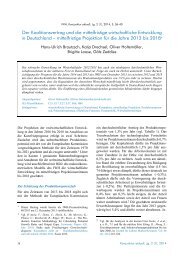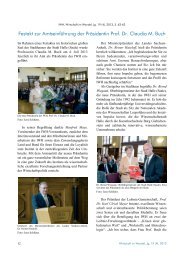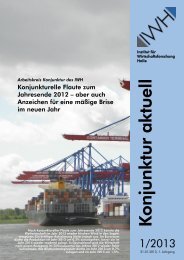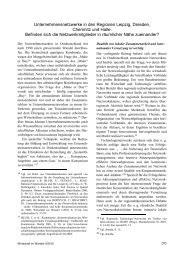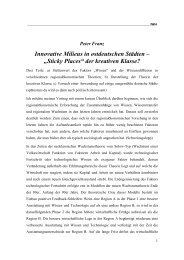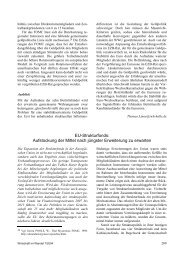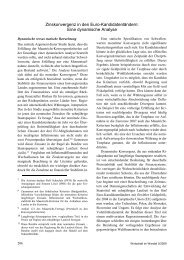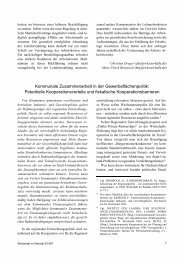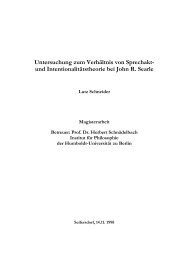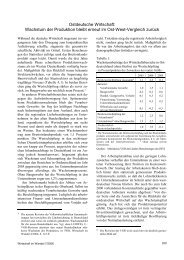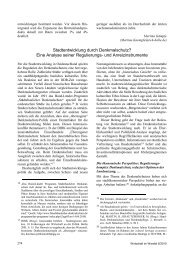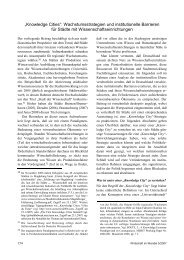Holger Zemanek: Bitte in dem anderne Paper die Anmerkungen von ...
Holger Zemanek: Bitte in dem anderne Paper die Anmerkungen von ...
Holger Zemanek: Bitte in dem anderne Paper die Anmerkungen von ...
You also want an ePaper? Increase the reach of your titles
YUMPU automatically turns print PDFs into web optimized ePapers that Google loves.
and non-traded goods <strong>in</strong> the economy and the consumer price <strong>in</strong>dex.<br />
EA<br />
T<br />
[ qˆ<br />
T qNT<br />
pˆ = pˆ<br />
+ eˆ<br />
+ ( 1−α<br />
) c − ˆ ]<br />
Accord<strong>in</strong>g to equation (8), <strong>in</strong>flation <strong>in</strong> Central and Eastern European countries is driven by<br />
<strong>in</strong>flation <strong>in</strong> the euro area traded goods sector (as the ma<strong>in</strong> reference market for Central and<br />
Eastern Europe), exchange rate changes aga<strong>in</strong>st the euro and the differential of productivity<br />
ga<strong>in</strong>s between the traded and non-traded goods sectors.<br />
Based on equation (8) two corner solutions of exchange rate regimes can be dist<strong>in</strong>guished.<br />
Under a fixed exchange rate regime (ê=0) the exchange rate term drops out and domestic<br />
<strong>in</strong>flation would be solely driven by domestic productivity development and price<br />
development <strong>in</strong> world markets. Under flexible exchange rates, exchange rate changes would<br />
constitute a pivotal additional determ<strong>in</strong>ant of domestic <strong>in</strong>flation.<br />
2.2 Capital markets and a new equilibrium path<br />
The Balassa-Samuelson model is a pure goods market model. Productivity <strong>in</strong>creases are<br />
assumed to be exogenous and driven by domestic capital formation. This assumption was<br />
realistic dur<strong>in</strong>g the Bretton-Woods system when <strong>in</strong>ternational private capital flows were<br />
strongly restricted. Current account deficits were ma<strong>in</strong>ly subject to government f<strong>in</strong>anc<strong>in</strong>g, and<br />
therefore usually not susta<strong>in</strong>able and small. In contrast to the emerg<strong>in</strong>g markets <strong>in</strong> the 1950s,<br />
<strong>in</strong>vestment and productivity <strong>in</strong> Central and Eastern Europe up to the 2008/09 crisis has been<br />
driven by substantial capital <strong>in</strong>flows from the highly developed, low <strong>in</strong>terest rate euro and<br />
dollar capital markets via foreign direct <strong>in</strong>vestment and bank lend<strong>in</strong>g. 4 This has been reflected<br />
<strong>in</strong> ris<strong>in</strong>g current account deficits.<br />
Introduc<strong>in</strong>g capital markets <strong>in</strong>to the Balassa-Samuelson model modifies the adjustment<br />
mechanism <strong>in</strong> two ways. First, because capital markets <strong>in</strong> emerg<strong>in</strong>g market economies are<br />
shallow, underdeveloped and rather closed (Eichengreen and Hausmann 1999), capital tends<br />
to be scarce which constitutes a bottleneck for domestic productivity <strong>in</strong>creases, growth, and<br />
economic development. Open<strong>in</strong>g up to <strong>in</strong>ternational capital markets is equivalent to provid<strong>in</strong>g<br />
4<br />
In contrast to Emerg<strong>in</strong>g Europe, <strong>in</strong> East Asia and other parts of the emerg<strong>in</strong>g world current account surpluses<br />
have emerged (Freitag and Schnabl 2008).<br />
- 6 -<br />
(8)



